After the Second World War Autotaxi Rt. was nationalised and all private companies liquidated. In the 1950s only Főtaxi – owned by the City Council – was allowed to provide taxi services in Budapest.
While the company had relatively few cars, those it did own were of a wide variety. Many of them were so-called small cars, such as the Renaults purchased in 1947, and the Skodas and Moskvitches bought later. Larger cars arrived in the 1950s, including Pobedas, Warsawas and Wartburgs. However, many of these performed poorly as taxis.
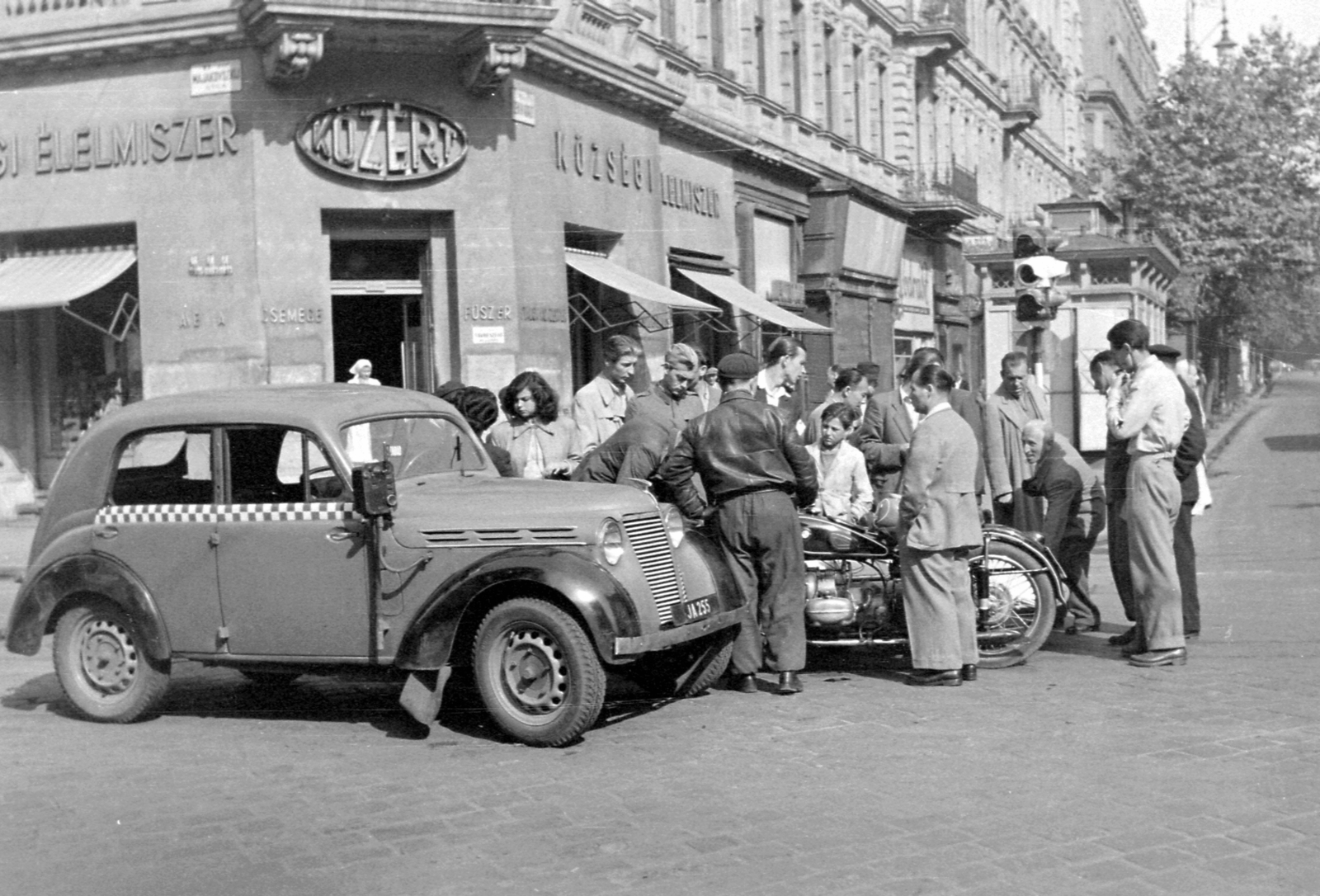
Renault Juvaquatre taxi in Budapest, 1953 (Photo: Fortepan, Magyar Rendőr)
Maintaining so many models was a nightmare. Thus, by 1960 the old Renaults, Skodas, and even the Wartburgs bought in 1957 were retired from service.
 Főtaxi also used Wartburgs as taxis for a short time (Photo: Fortepan/No.: 123775)
Főtaxi also used Wartburgs as taxis for a short time (Photo: Fortepan/No.: 123775)
Furthermore, new, large and modern vehicles were added to the fleet in 1960. The Esti Hírlap reported on their arrival on 9 October 1960:
"Volga taxis roam the streets of Pest. Főtaxi has received 50 modern cars. Thirty of these will run in the city, while another 20 will serve as hire vehicles for rural trips. The engine in the Soviet car is strong and reliable – it handles hills easily. The body is well designed and its seats comfortable. The large car fits four passengers and a driver, making travel a pleasure."
Not all of the 50 new vehicles were adorned with the yellow and black chequerboard strip. Some were used as rental cars and could be hired for weddings at 52 Forints an hour, however, they were not cheap.
The Volga M21 was no joke for its time. It won a grand prize at the 1958 world Fair in Brussels. The large vehicle seated five comfortably and even had a large boot. The 2445 cc engine provided 70 horsepower, which was delivered to the wheels through a three-speed, unsynchronised transmission.
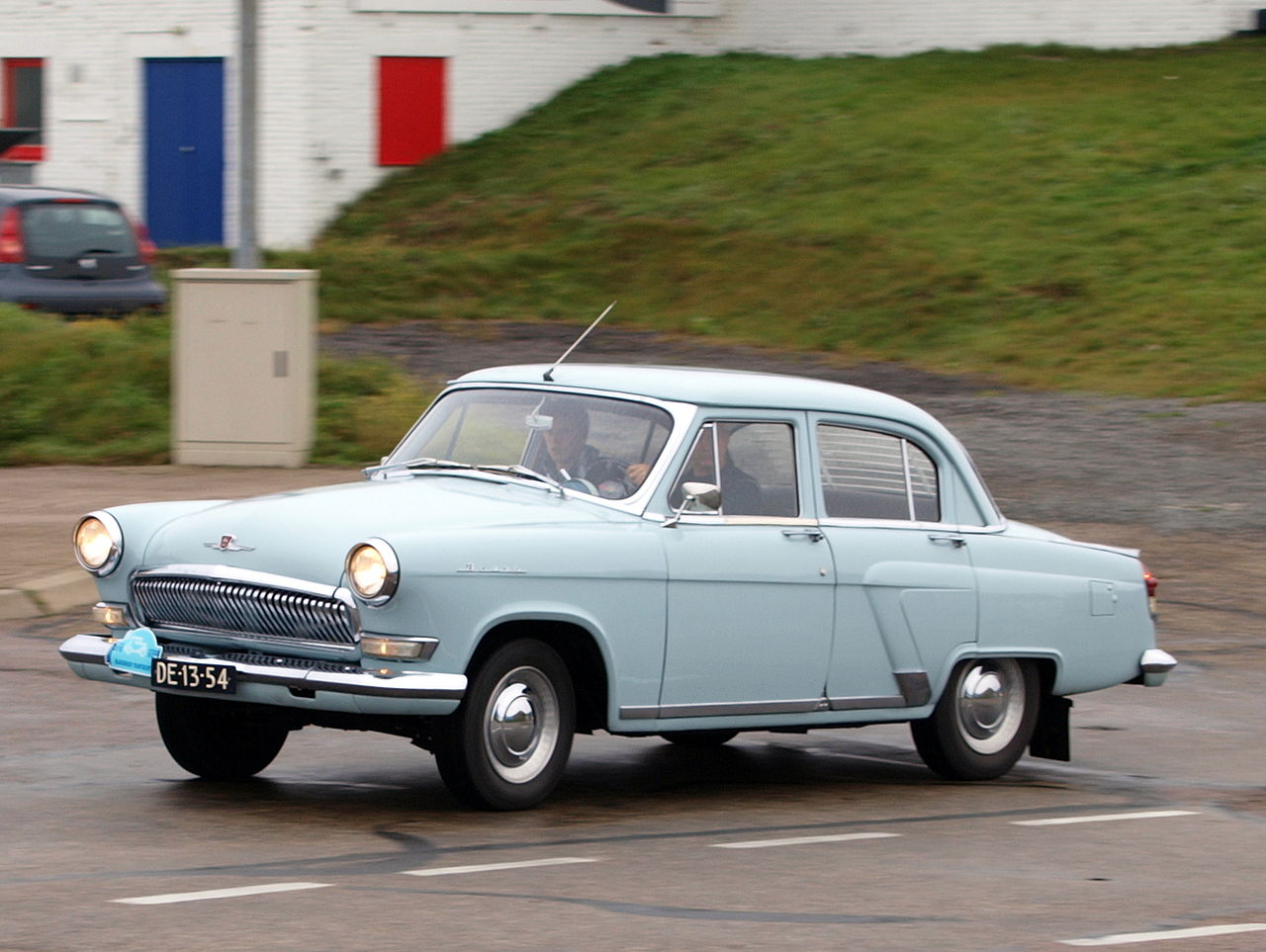 The Volga M21 was available in Western Europe as well. Pictured above is a restored Dutch vehicle (Photo: Wikipedia/Alf van Beem)
The Volga M21 was available in Western Europe as well. Pictured above is a restored Dutch vehicle (Photo: Wikipedia/Alf van Beem)
The car was not a replica or license of a Western vehicle, but design from the ground up by Russian engineers. However, some of its characteristics are reminiscent of American vehicles, especially the 1955 Ford Mainline.
At the time Főtaxi owned over 900 cars. Thus, the 50 new vehicles were like drops in the ocean but still provided a general improvement. Főtaxi also attempted to improve its services in other ways and opened a series of substations with direct phone-lines in the outer districts of the city.
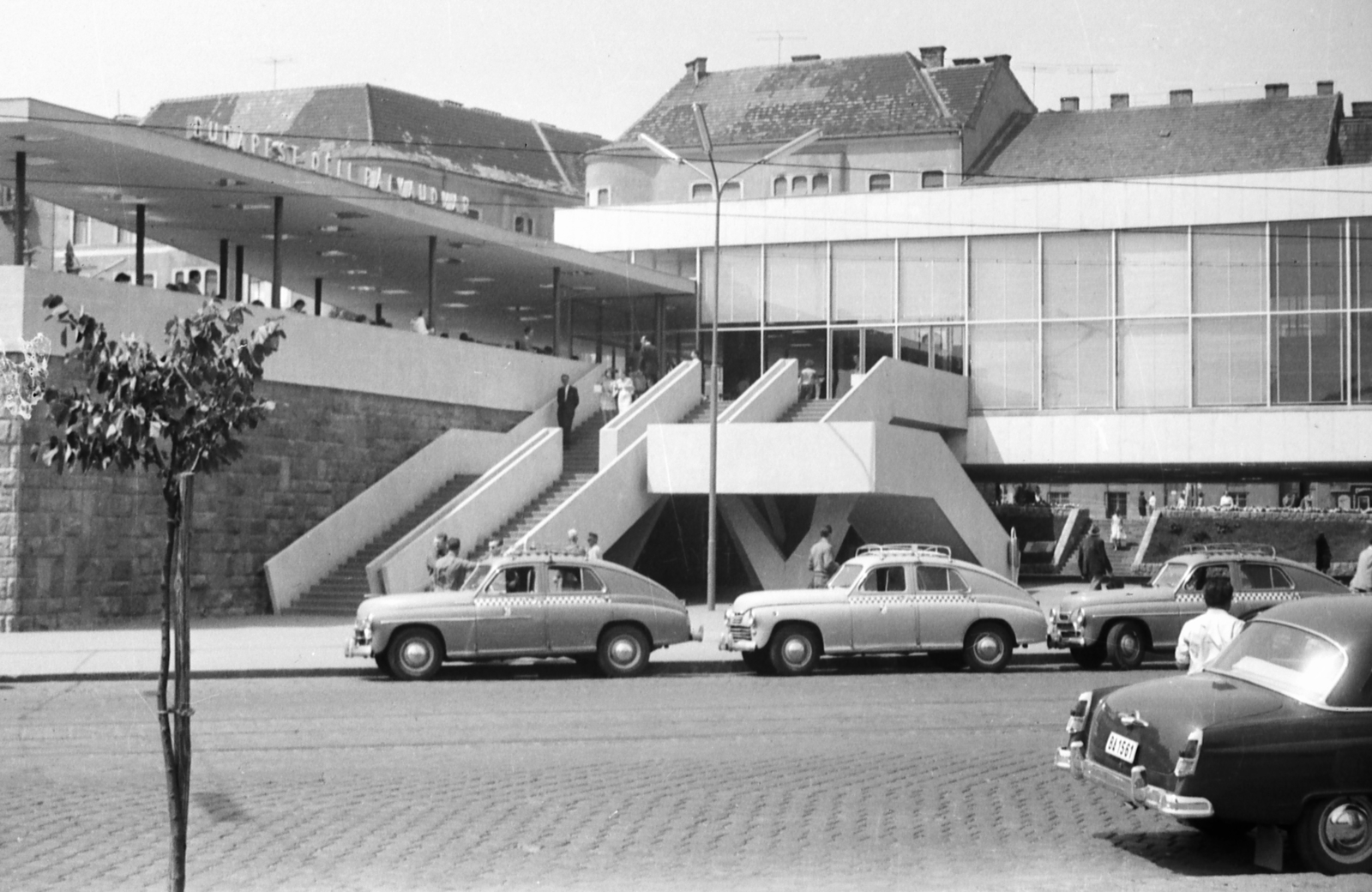 Polish Warsawa taxis in front of déli Pályaudvar (Southern Railway Station) in 1967 (Photo: Fortepan/No.: 41730)
Polish Warsawa taxis in front of déli Pályaudvar (Southern Railway Station) in 1967 (Photo: Fortepan/No.: 41730)
Főtaxi later wanted to increase the number of Volgas in its fleet. The Executive Committee of the Budapest City Council discussed the transportation issues of the second five-year-plan in August 1962. The proposal reads:
"To improve the quality of passenger transportation, the vehicle fleet must be expanded. The number of buses must be increased by 400 and taxis by 350, with the basic type being the 'Volga'. To meet special needs (weddings, etc.), 10 Sirály cars should also be purchased."
A few years later in 1964, plans were made to purchase 1900 Bolgas before the end of the decade.
Despite these efforts, Főtaxi struggled with a major lack of capacity throughout the next decade. As a result, they did not transport packages and larger household appliances from 1967. Towards the end of the '60s, there was a year when 200,000 calls were left unfulfilled.
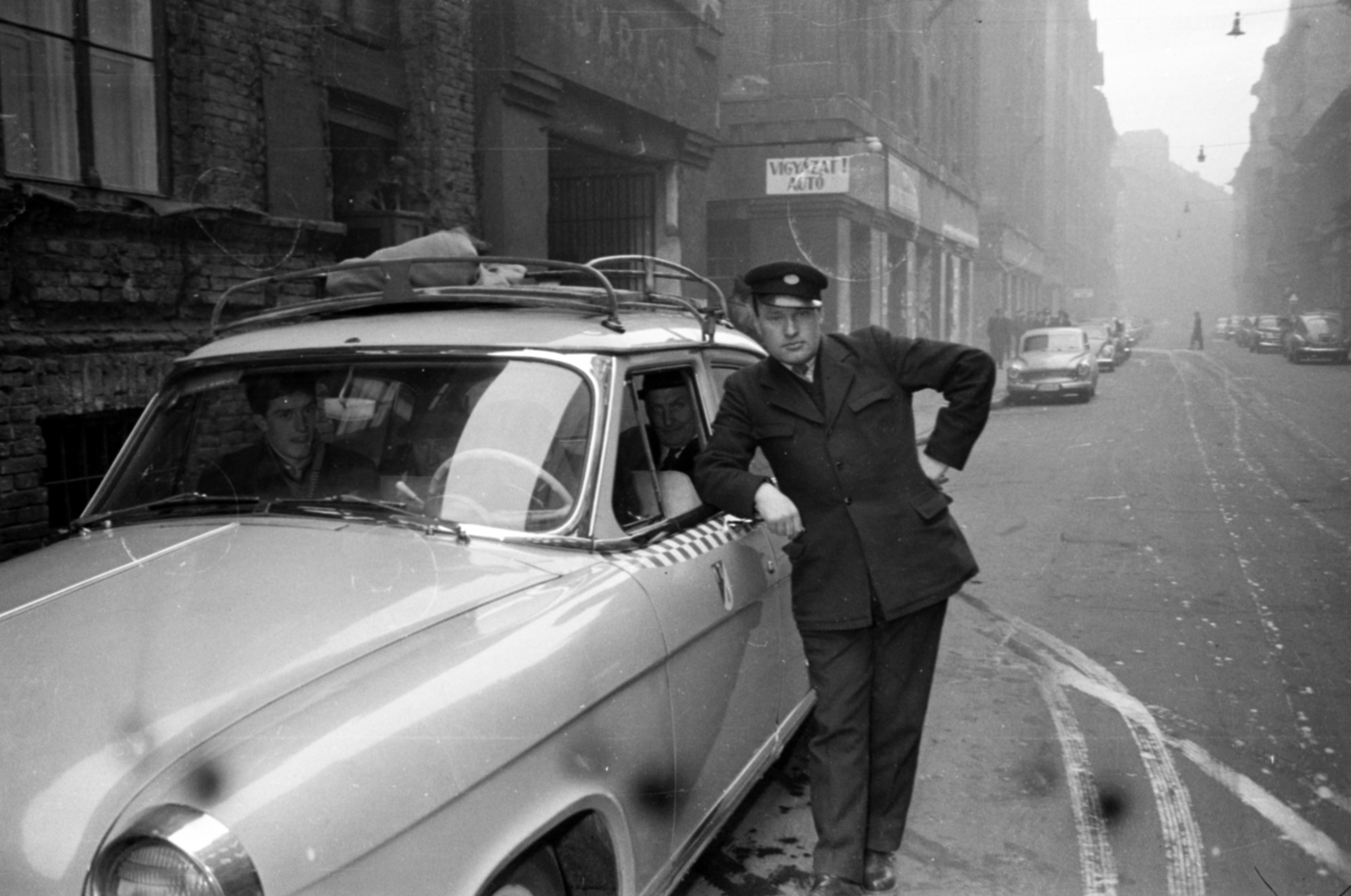 Volga taxi and its driver in 1960 (Photo: Fortepan/No.: 149074)
Volga taxi and its driver in 1960 (Photo: Fortepan/No.: 149074)
The number of cars in Budapest did not increase significantly. Ten years later the company used exactly 293 more cars than it had in 1960. Most vehicles were from the Soviet Union. Between 1949 and 1970 860 Pobedas, 1400 Moskviches and 860 Volgas were purchased for the Budapest taxi service. Most of the 3120 vehicles were not even Volgas, but the much smaller Moskviches.
Thus the fleet was as diverse as ever, beyond these, Polish Warsawas from the '50s and more modern Polish Polski Fiats also ran the streets of the capital.
In 1960 it was estimated that Budapest would be best served by 2500–3000 cars. In 1968 Főtaxi received competition as Volán started a taxi service in Budapest. The company even purchased Zastava 750s and employed female drivers in so-called "mini taxis."
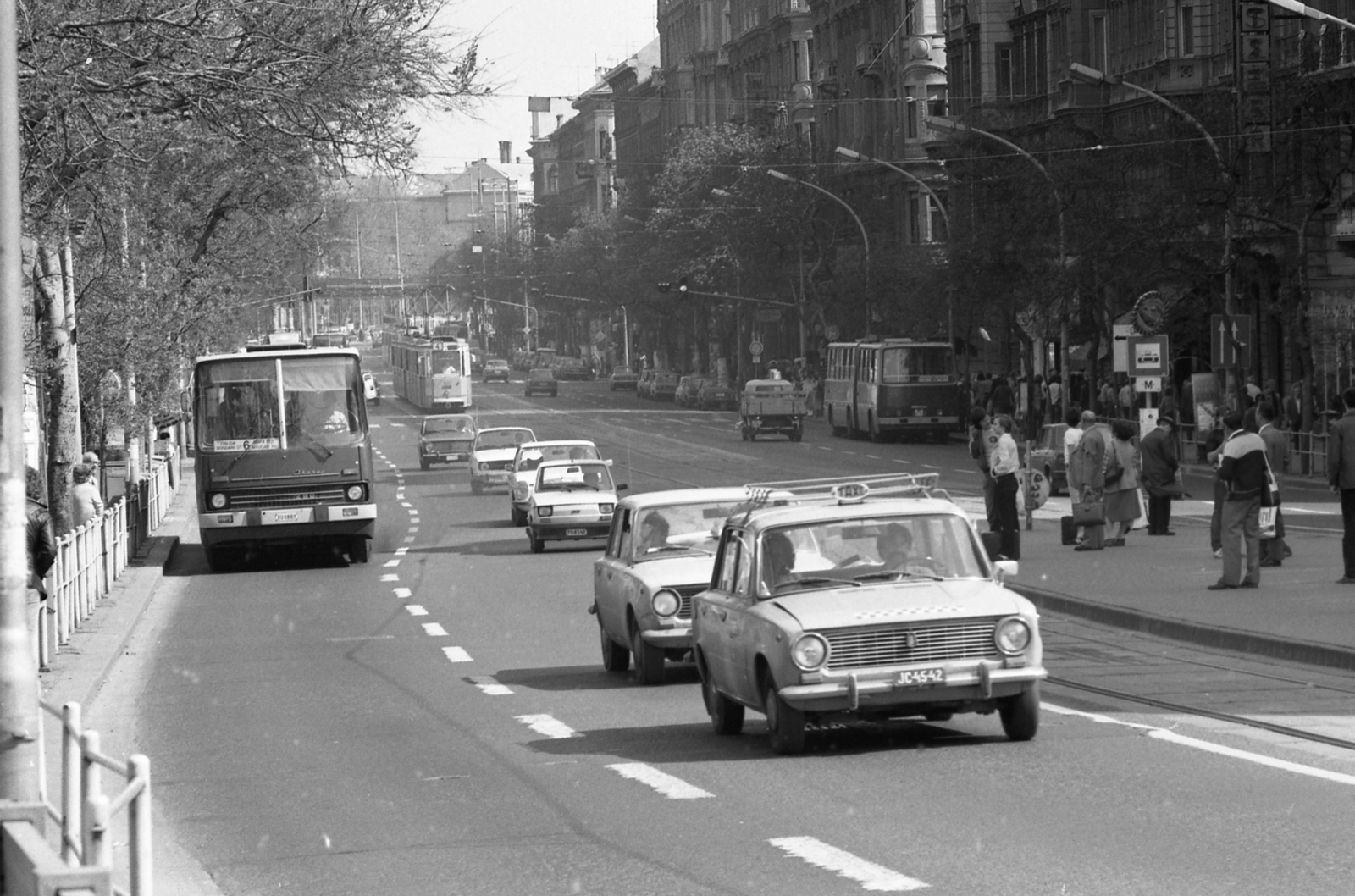 From 1971, Lada became the dominant vehicles in the Főtaxi fleet (Photo: Fortepan, Magyar Rendőr)
From 1971, Lada became the dominant vehicles in the Főtaxi fleet (Photo: Fortepan, Magyar Rendőr)
In the end, the Volga never became the dominant car in the Főtaxi fleet. From the end of the 1960s, the Polski Fiat 125 represented a more modern look, and from 1971 onwards the Zhiguli (Lada) brought true unification to Főtaxi. The Zhiguli was a licensed and adapted version of the Fiat 124, te-thousand of which reached Főtaxi between 1971 and 1979.
Private taxis then appeared in 1982, re-diversifying the taxi fleets of the capital and bringing competition back into the Budapest taxi market.
Cover photo: A Volga taxi, 1964 (Photo: Fortepan/No.: 50622)

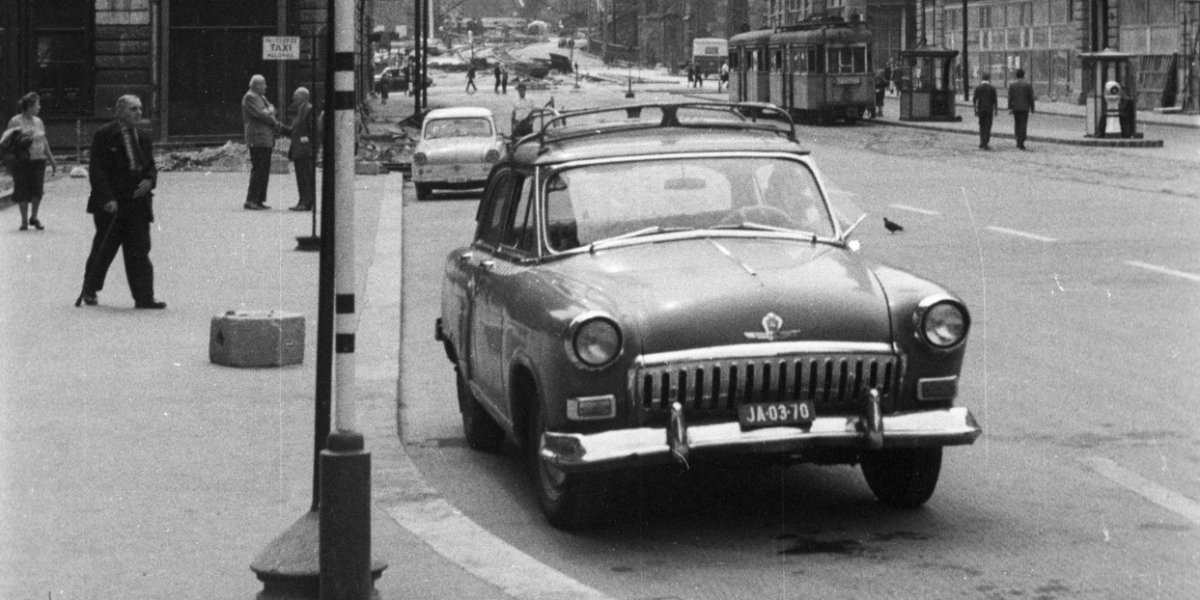



































Hozzászólások
Log in or register to comment!
Login Registration